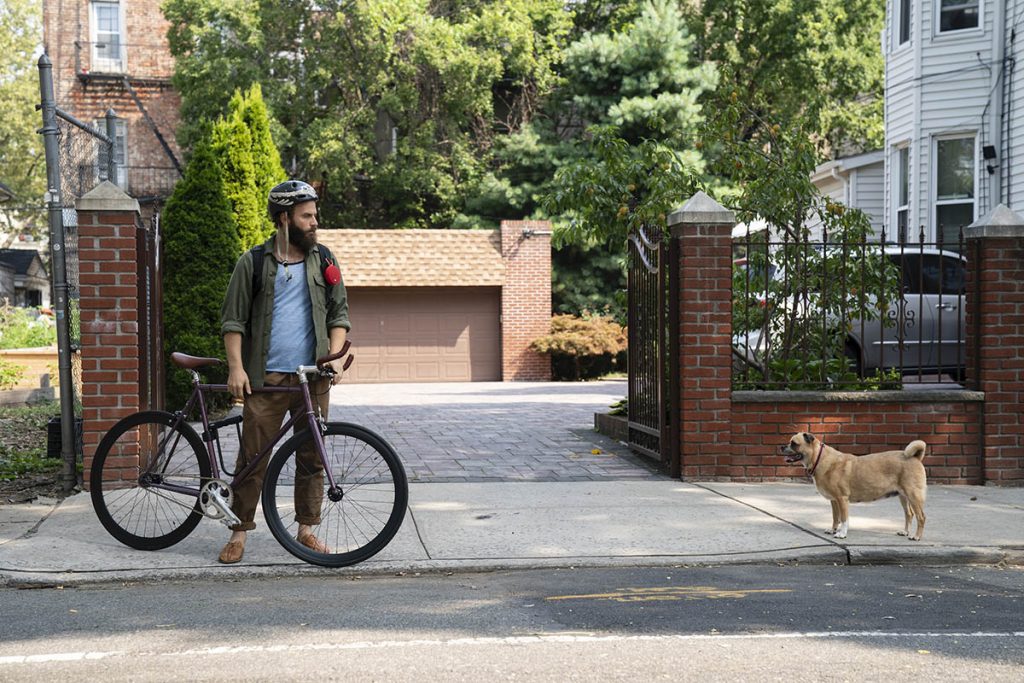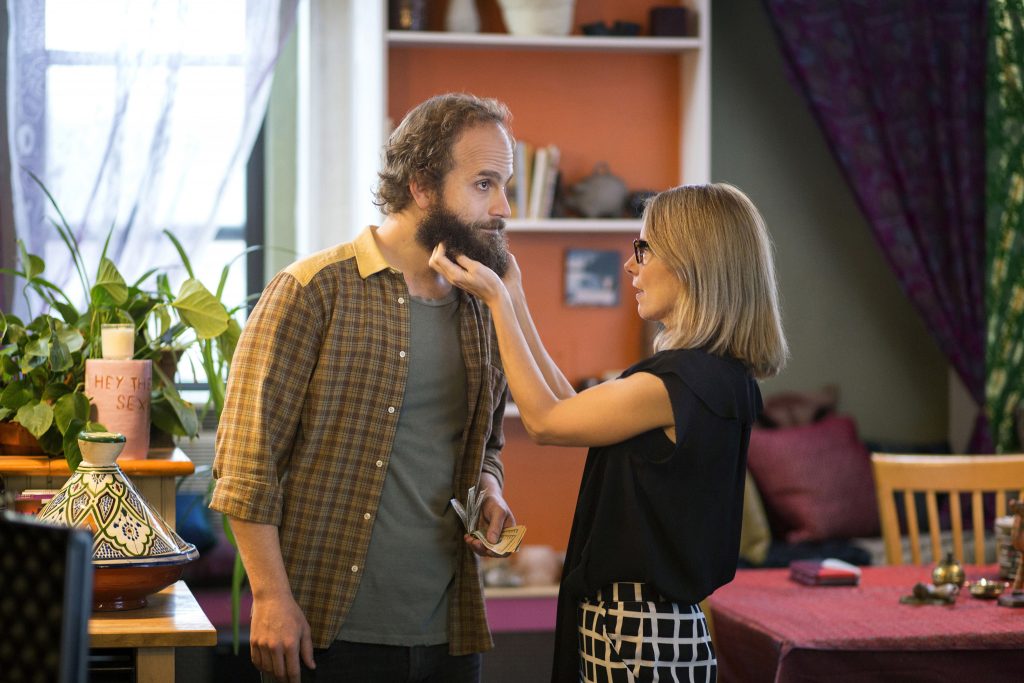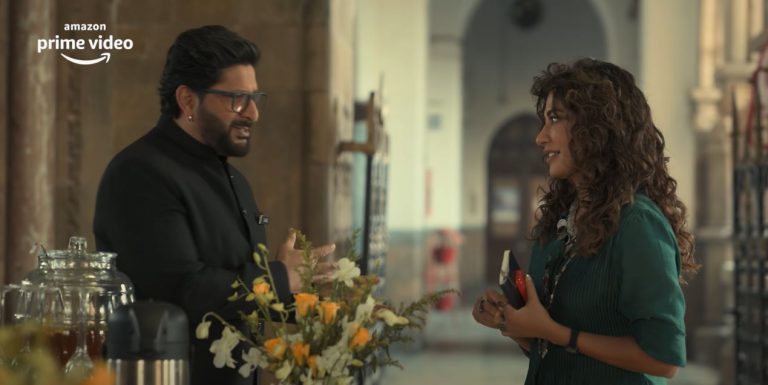High Maintenance is a gem. It’s difficult picking good TV to watch with a group of people since “good” means something different to every individual in terms of themes, genre, subject matter, even language, and release date. High Maintenance is rare because it’s a crowd-pleaser, something that appeals to a variety of tastes, and this is purely by design. The show favors multiple points of view as opposed to just that of a single protagonist, creating a moving portrait of a modern New York as dynamic as the city itself.
Created in 2016 by Katja Blechfeld and Ben Sinclair (the show’s lead), High Maintenance follows an easy-going weed dealer, known only as The Guy, as he interacts with and observes a myriad of interesting clients. Though on the surface the story looks to be about weed, it’s more about people and the richness of life as experienced through the eyes of a doorman, a dog walker, an uber driver, a dancer, the list goes on.
Blechfeld described the show as a “tapestry of character portrayals” and the metaphor couldn’t be more apt. It’s this shifting of perspectives that make the show accessible to so many. While highlighting the ostensible differences between individuals, it also affirms what they all have in common: feelings of insecurity, joy, and fear, and the day-to-day personal dramas that we all face.
Multiperspectivity (not new to fiction and certainly not to TV) gives narratives a universality that casts a wide net in terms of audience. For High Maintenance, though, the use of multiple voices seems like more than just a narrative tool; there’s a persistent ethos of compassion in the show that seems to advocate for kindness, humility, and mutual respect amongst people.
Similar To High Maintenance: Pen15 Season 2 (Hulu Review)
The film has been hailed before as a medium that promotes human understanding, most notably by film critic Roger Ebert who referred to film as an “empathy machine”. For Ebert, this was film’s most valuable quality, the ability to help the viewer understand “what it’s like to be a different gender, a different race, a different age, a different economic class, a different nationality, a different profession, with different hopes, aspirations, dreams, and fears.” Put more simply: to walk a mile in someone else’s shoes.
Film makes this easy; the audience meets the character, gets to know them, laugh with them, cry with them, really understand them. In High Maintenance this empathy production is ramped up tenfold as we get to know not only a vast array of people but a diverse one at that. The show calls us not only to kindness but to social awareness as well.
High Maintenance has what you might call an expansive moral circle. Sociologists use the concept of moral circles to understand differences in moral judgments across cultures. At the center of these circles is the self, surrounded then by concentric circles that include family, extended family, community, nation; then all humans, all mammals, and finally, all living things, each more socially distant than the one before. Someone with a moral circle only cares about those within the same community, whereas someone with a larger moral circle considers the lives and feelings of people different from them.
Similar To High Maintenance: After Life (Season 2) Review
Rather than favor the point of view of the Guy, we have a narrative center that shifts away from him, focusing instead on the characters in his orbit: his clients, neighbors, people he passes in the street. Again and again, the narrative brings characters out of Guy’s periphery and into the spotlight, expanding the boundaries of who we might consider worthy of our attention. By drawing attention to the periphery, the show promotes spatial awareness and, by extension, social awareness as well.
Moral circles are essentially about the inclusion and exclusion of certain groups. When someone is radically different from us, we tend to exclude them from our consideration. Not so in High Maintenance, however. The show lives and breathes inclusion and diversity. In an article with newnownext, casting director Andrew Femenella talks about the representation of racial and ethnic minorities, people with different body types, sexual identities, and orientations, with the goal always being authenticity.
Also Check Out: Fleabag Season 2
Take “Rachel” for example, an episode from the original web series. Here we meet Collen (played by Dan Stevens), a stay-at-home dad and author. At first glance, Collen seems like a regular dad. He kisses his wife goodbye as she heads off to work, drops his son off at daycare, the regular suburban routine; but once he has the apartment to himself, Collen takes out a stylish golden pipe, gets high, and plays dress-up. We see him lounging about in a kaftan, trying on clogs that don’t fit, checking himself out in the mirror wearing a floral blouse. At this point, we can only assume Collen is trying on his wife’s clothes, waiting for some alone time so he can experiment with fashion in secret.
In a coffee shop with his agent, Collen resists the pressure to make his novel’s protagonist more ‘masculine’ in the conventional sense. His bosses want a man’s man as the leading character, pressing Collen to make the protagonist a detective, perhaps: “Maybe he gets caught in a brothel or, I don’t know, his wife gives him a blowjob.” Collen isn’t comfortable with these traditional ideas of manhood, sitting there in his jeans and sweater with a blouse tucked away underneath. “The thing is,” Collen says, “he’s dealing with feelings of crushing emasculation, right? That’s the point. All his notions of fatherhood, identity, and everything, are challenged when he becomes a stay-at-home dad.” We feel sorry for Collen, having to hide the way he dresses from his wife and colleagues. Afraid of how they might react if they knew his secret.
Also, Read: The 26 Hotstar TV Shows That Are Worth Your Time
When the Guy comes round to sell Collen some weed, he wants to acknowledge that Collen’s wearing a dress but is careful not to make him uncomfortable. This is a typical Guy behavior. He is consistently accepting of other characters, an advocate for the show’s ethos of compassion. “You look good, man,” he says with a smile. “You’ve got style.” Later, when Collen’s wife, Becky, comes home unexpectedly, we assume the cat is out of the bag. “What the f**k?” she mouths to Collen, waving the weed smoke away.
The peak of the episode’s tension comes when Becky finally addresses Collen’s clothing. “Did you let the weed guy in” she asks, “dressed like that?” I hold my breath, wait for an argument to ensue. But instead of freaking out, Becky beams with pride. The tension diffuses as she takes his hands, smiles, and asks ”How did you feel?”. It’s a welcomed plot twist, one that makes us double-take on our assumptions about how “cool with it” Becky might be.
High Maintenance champions marginality, but it does so in a way that calls the very model of center and periphery into question. Rather than distinguish between in- and out-groups, the narrative presents the atypical traits (at least in the realm of modern television) of its characters as a given, as normal. To return to the casting, queer people were not relegated to queer roles, Femenella said, as it was important to “cast queer people in roles where sexual orientation or gender identity aren’t addressed” as well.
Highly Recommended: 10 Great Adult Animated Shows On Netflix
High Maintenance addresses most, if not all, of the stratifiers that demarcate our moral circles. Where previous episodes have touched on such polarizing subjects as gender identity, religion, and class with humor, Globo gives High Maintenance a chance to explore what divides us in more somber tones.
In this episode, a nameless event has shaken up the entire city. Newspaper headlines that day read “Tragedy strikes,” we overhear conversation after conversation on how this big news will affect art, politics, the financial market, a woman in a cafe wonders aloud if she should move back to Britain. The Guy even goes to work early that day, suspecting his clients will need something to take the edge off after hearing the news.
If you haven’t guessed the nature of the event by the end of the episode, Beth delivers the final clue in an awkward exchange with her fellow bartender, Ruiz. Drunkenly, she yells at the Guy “I’m panicked, [Ruiz is] panicked and his panic is that he’s Hispanic!” Figured it out? According to the show creators, Globo takes place the day Donald Trump won the 2016 U.S presidential election. It’s a touching episode that reveals the underlying class and race tensions Trump’s election would inevitably exacerbate.
Also Check Out: Unbelievable (2019) On Netflix
In one scene set in a cafe, the narrative draws attention to the rigid lines between rich and poor, diners, and servers. As the camera moves through the room, we hear snippets of conversation from well-to-do customers. A homeless man is shooed away from a table when he reaches into a bowl of seafood; a businessman wonders out loud how Trump will affect the stock market; a woman turns her nose up at some untouched french fries, wincing “I didn’t know they were truffle fries.” The atmosphere changes as the camera follows Ruiz, the waiter, into the kitchen. “Couldn’t they have let the homeless man finish the food, at least?” the cook wonders out loud. It’s a pithy scene that shines a harsh light on the contrast between those on opposite sides of the breadline.
Later in the episode, we meet roommates Cody and Brian, one rocked by the news, the other pretty unfazed. Where Brian is unable to go to work, in tears under blankets, preparing to get high in light of the “phantasmagoria of despair” outside in the real world, Cody’s focus is elsewhere. He agrees that the news is “crazy, man” but he’s preoccupied with his dramas.
Also Check Out: The Six Stages of The Evolution of Walter White
As the episode goes on, Cody tries desperately to erect a barrier between his safe, inner world and the real one. Like many of us, he is more inclined to insulate himself from unsettling news rather than process it. This is portrayed visually using a shallow depth of field; characters just behind Cody are noticeably out of focus despite being well within earshot. The background conversation is loaded with tension, even though you may miss it on the first watch.
Essentially, a white man makes a tone-deaf remark about “the struggle,” followed by an awkward and hilarious exchange around the show Different Strokes. I won’t ruin it for you here, but the take away from the scene is clear: we cannot, must not discount the experiences of others. It may just seem like a funny faux pas, but it falls into the show’s tone and impetus towards social awareness. After all, Cody’s oblivious position is a privileged one. The narrative provides a potent reminder that Trump’s election had (still has) very real, devastating implications for black Americans, and urges us to expand our scope of concern beyond the self.
More Like High Maintenance: 10 Great Films On Hotstar You Can Stream On Right Now
It’s a hippie-era sentiment perhaps unsurprising from what, on the surface, looks like a sitcom for stoners, but this is to High Maintenance’s credit. Amongst a slew of cop dramas and what seems to be an endless remaking of the Friends recipe, Blechfeld and Sinclair have created a utopia their audience can root for, one where every man, woman, and child has their say (there’s even a delightful episode shot from the perspective of a dog named Grandpa.)
Call it social awareness, an expansive moral circle, vaguely Buddhist, there are many ways to describe what appears to be the High Maintenance agenda. To oversimplify, you could call it woke. By celebrating difference and humanness that transcends it, Blechfeld and Sinclair have created some truly uplifting TV at a time where the world desperately needs it.







![Dragged Across Concrete Review [2019]- Taste the Pavement](https://79468c92.delivery.rocketcdn.me/wp-content/uploads/2019/04/DAC_D27_04417-768x502.jpg)
